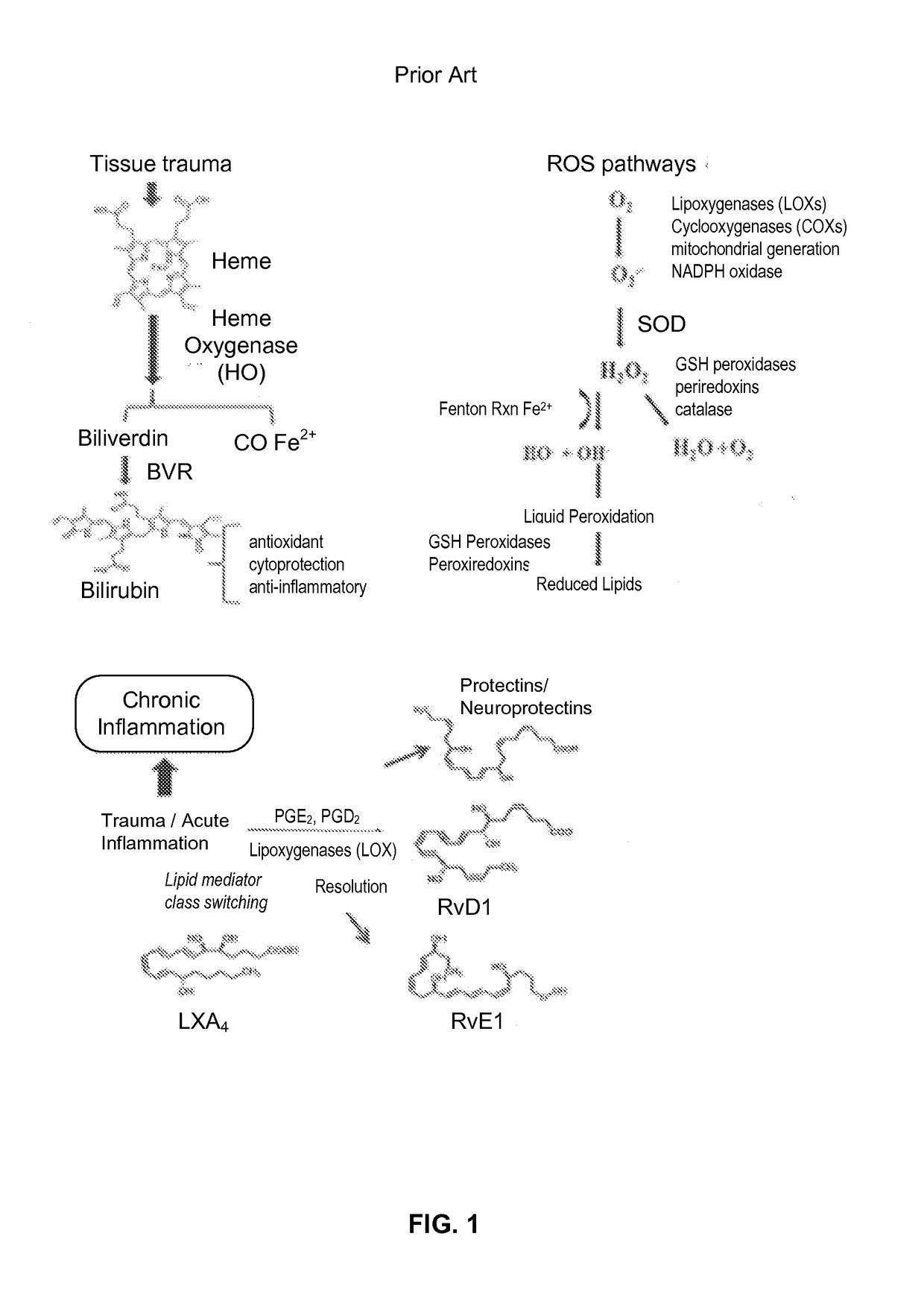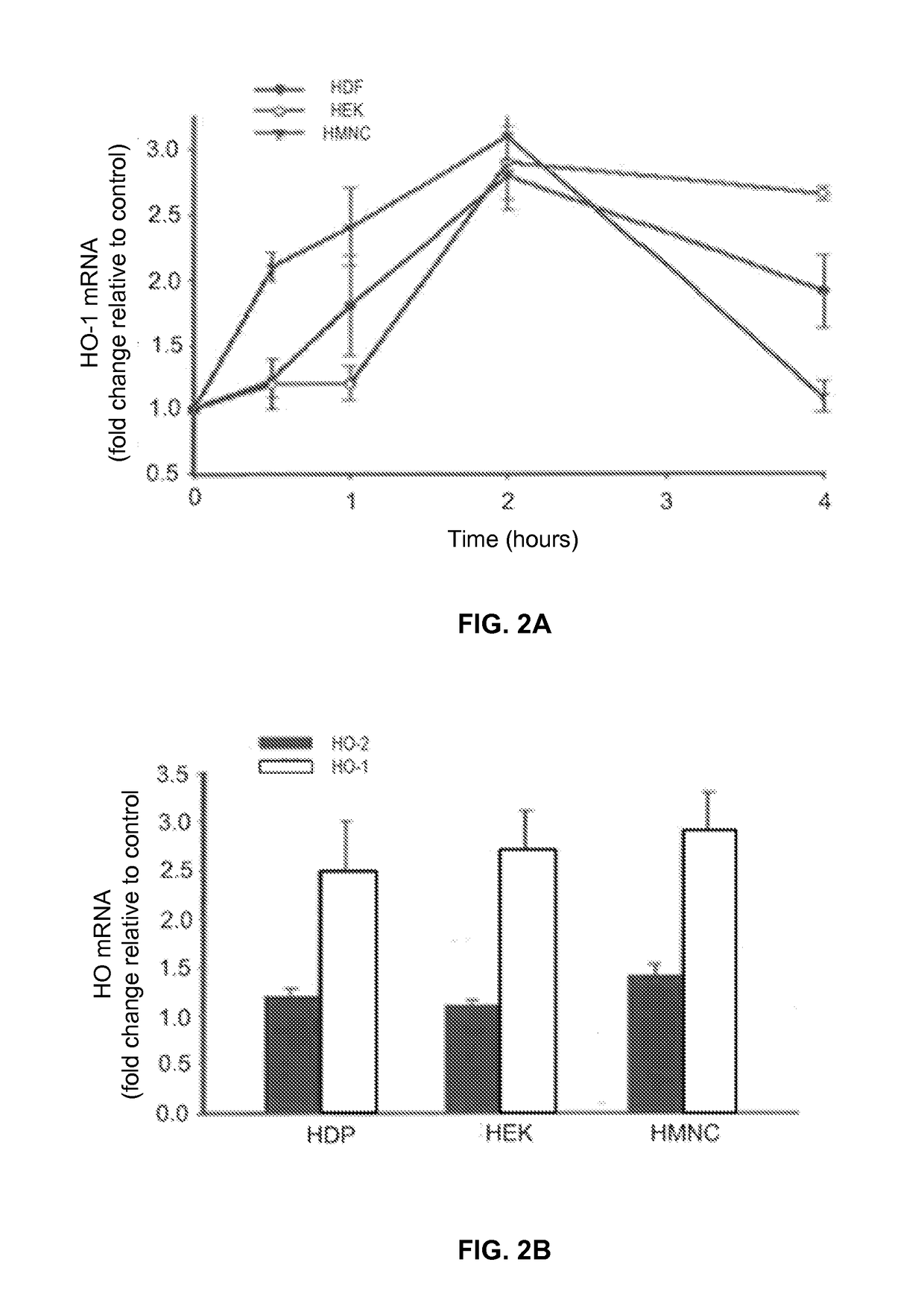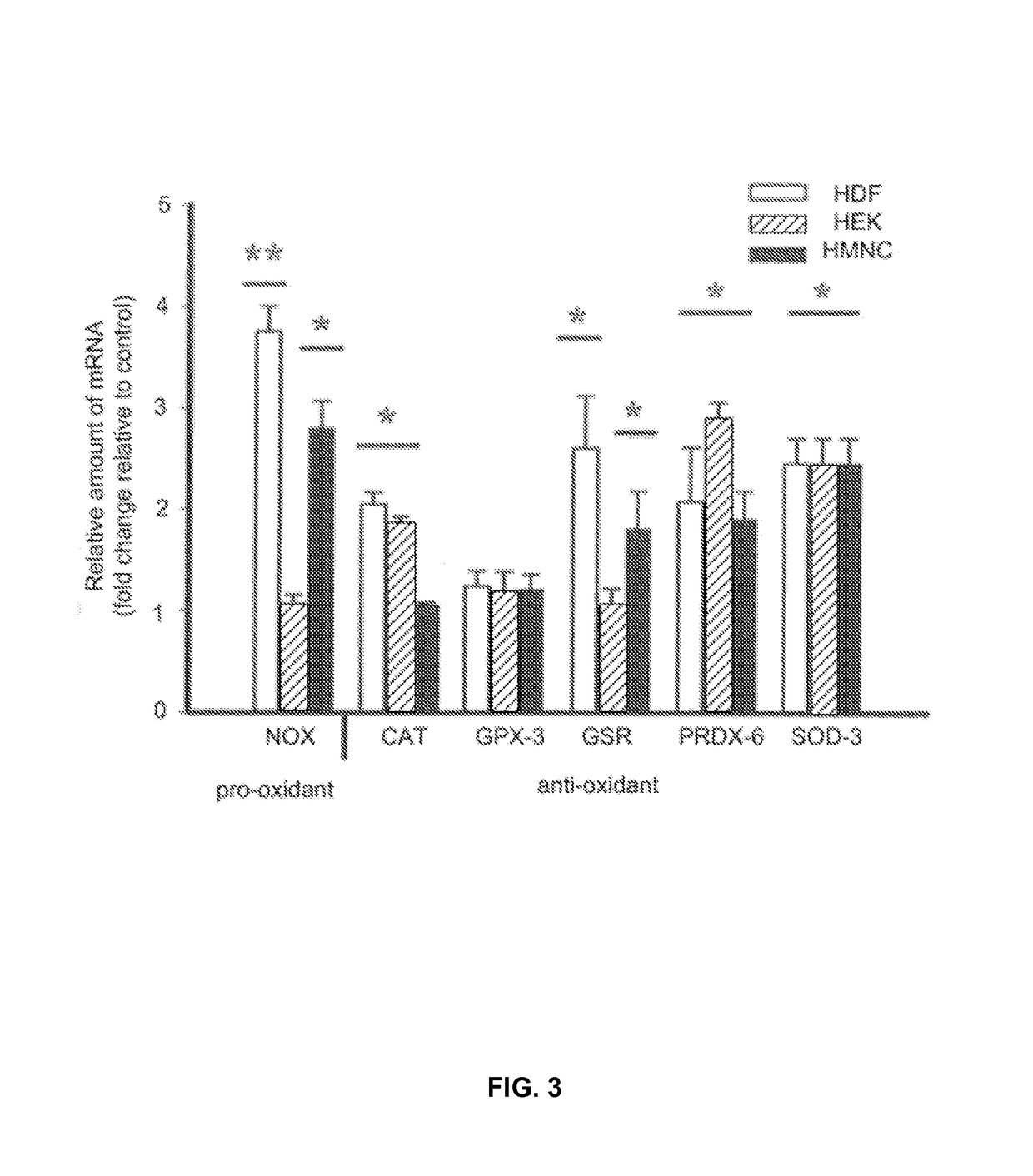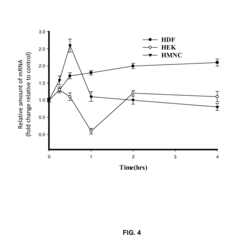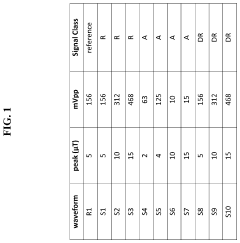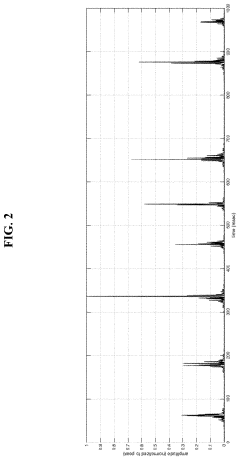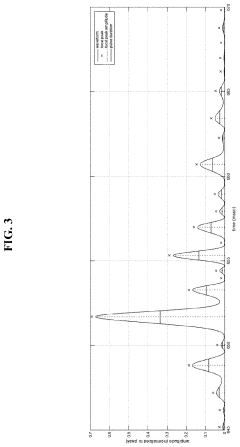How to Implement PEMF Therapy Post-Injury for Accelerated Healing?
AUG 11, 20259 MIN READ
Generate Your Research Report Instantly with AI Agent
Patsnap Eureka helps you evaluate technical feasibility & market potential.
PEMF Therapy Background and Objectives
Pulsed Electromagnetic Field (PEMF) therapy has emerged as a promising non-invasive treatment modality for accelerating healing post-injury. This technology harnesses the power of electromagnetic fields to stimulate cellular repair and regeneration. The history of PEMF therapy can be traced back to the mid-20th century, with significant advancements in recent decades due to improved understanding of cellular biology and electromagnetic interactions.
The primary objective of implementing PEMF therapy post-injury is to enhance the body's natural healing processes. By applying specific electromagnetic frequencies to injured tissues, PEMF therapy aims to reduce inflammation, increase blood flow, and promote cellular regeneration. These effects collectively contribute to faster recovery times and improved overall healing outcomes.
Recent technological developments have led to more sophisticated PEMF devices, allowing for precise control over field strength, frequency, and waveform. This precision enables tailored treatments for various types of injuries, from soft tissue damage to bone fractures. The versatility of PEMF therapy has sparked interest across multiple medical disciplines, including orthopedics, sports medicine, and rehabilitation.
The growing body of scientific evidence supporting PEMF therapy's efficacy has driven its adoption in both clinical and home-use settings. Studies have demonstrated positive results in treating conditions such as osteoarthritis, tendinitis, and non-union fractures. However, the full potential of PEMF therapy in post-injury healing is still being explored, with ongoing research focusing on optimizing treatment protocols and expanding its applications.
One of the key objectives in implementing PEMF therapy is to establish standardized protocols for different injury types and stages of healing. This standardization would ensure consistent and effective treatment delivery across various healthcare settings. Additionally, there is a push to develop more portable and user-friendly PEMF devices, making the therapy more accessible for home use and continuous treatment.
Another important goal is to integrate PEMF therapy with other established treatment modalities to create comprehensive healing regimens. This integration could potentially lead to synergistic effects, further accelerating the healing process and improving patient outcomes. Researchers are also investigating the long-term effects of PEMF therapy to ensure its safety and efficacy for extended use.
As the field of PEMF therapy continues to evolve, future objectives include refining the understanding of the underlying mechanisms of action at the cellular and molecular levels. This deeper insight could lead to more targeted and effective treatments, potentially revolutionizing post-injury care and rehabilitation strategies.
The primary objective of implementing PEMF therapy post-injury is to enhance the body's natural healing processes. By applying specific electromagnetic frequencies to injured tissues, PEMF therapy aims to reduce inflammation, increase blood flow, and promote cellular regeneration. These effects collectively contribute to faster recovery times and improved overall healing outcomes.
Recent technological developments have led to more sophisticated PEMF devices, allowing for precise control over field strength, frequency, and waveform. This precision enables tailored treatments for various types of injuries, from soft tissue damage to bone fractures. The versatility of PEMF therapy has sparked interest across multiple medical disciplines, including orthopedics, sports medicine, and rehabilitation.
The growing body of scientific evidence supporting PEMF therapy's efficacy has driven its adoption in both clinical and home-use settings. Studies have demonstrated positive results in treating conditions such as osteoarthritis, tendinitis, and non-union fractures. However, the full potential of PEMF therapy in post-injury healing is still being explored, with ongoing research focusing on optimizing treatment protocols and expanding its applications.
One of the key objectives in implementing PEMF therapy is to establish standardized protocols for different injury types and stages of healing. This standardization would ensure consistent and effective treatment delivery across various healthcare settings. Additionally, there is a push to develop more portable and user-friendly PEMF devices, making the therapy more accessible for home use and continuous treatment.
Another important goal is to integrate PEMF therapy with other established treatment modalities to create comprehensive healing regimens. This integration could potentially lead to synergistic effects, further accelerating the healing process and improving patient outcomes. Researchers are also investigating the long-term effects of PEMF therapy to ensure its safety and efficacy for extended use.
As the field of PEMF therapy continues to evolve, future objectives include refining the understanding of the underlying mechanisms of action at the cellular and molecular levels. This deeper insight could lead to more targeted and effective treatments, potentially revolutionizing post-injury care and rehabilitation strategies.
Market Analysis for PEMF in Post-Injury Care
The market for Pulsed Electromagnetic Field (PEMF) therapy in post-injury care is experiencing significant growth, driven by increasing awareness of its potential benefits and a growing demand for non-invasive treatment options. The global PEMF therapy devices market is expected to expand at a compound annual growth rate (CAGR) of over 7% from 2021 to 2028, with the post-injury care segment playing a crucial role in this growth.
The rising incidence of sports-related injuries and workplace accidents has created a substantial demand for effective rehabilitation solutions. PEMF therapy has gained traction in this space due to its ability to potentially accelerate healing processes and reduce recovery times. Professional sports teams and rehabilitation centers are increasingly incorporating PEMF devices into their treatment protocols, further driving market expansion.
Consumer awareness of PEMF therapy for post-injury care is on the rise, particularly among athletes and fitness enthusiasts. This has led to an increase in the adoption of home-use PEMF devices, creating a new market segment for portable and user-friendly equipment. The convenience and potential cost-effectiveness of home-based treatments are attracting consumers who seek to manage their recovery process more independently.
The healthcare industry's shift towards preventive and regenerative medicine has also contributed to the growth of the PEMF market in post-injury care. Hospitals and clinics are integrating PEMF therapy into their treatment offerings, recognizing its potential to complement traditional rehabilitation methods and possibly reduce the reliance on pharmaceutical interventions.
Geographically, North America currently holds the largest market share for PEMF therapy devices, followed by Europe. However, the Asia-Pacific region is expected to witness the fastest growth in the coming years, driven by increasing healthcare expenditure and a growing awareness of alternative therapies in countries like China and India.
Despite the positive market outlook, challenges remain. The lack of standardized protocols for PEMF therapy in post-injury care and varying regulatory approvals across different regions could potentially hinder market growth. Additionally, the high cost of advanced PEMF devices may limit adoption in some markets, particularly in developing countries.
Looking ahead, technological advancements are expected to play a crucial role in shaping the PEMF market for post-injury care. Innovations such as wearable PEMF devices and integration with smart health monitoring systems are likely to create new opportunities for market expansion. As research continues to validate the efficacy of PEMF therapy in various post-injury applications, the market is poised for sustained growth in the coming years.
The rising incidence of sports-related injuries and workplace accidents has created a substantial demand for effective rehabilitation solutions. PEMF therapy has gained traction in this space due to its ability to potentially accelerate healing processes and reduce recovery times. Professional sports teams and rehabilitation centers are increasingly incorporating PEMF devices into their treatment protocols, further driving market expansion.
Consumer awareness of PEMF therapy for post-injury care is on the rise, particularly among athletes and fitness enthusiasts. This has led to an increase in the adoption of home-use PEMF devices, creating a new market segment for portable and user-friendly equipment. The convenience and potential cost-effectiveness of home-based treatments are attracting consumers who seek to manage their recovery process more independently.
The healthcare industry's shift towards preventive and regenerative medicine has also contributed to the growth of the PEMF market in post-injury care. Hospitals and clinics are integrating PEMF therapy into their treatment offerings, recognizing its potential to complement traditional rehabilitation methods and possibly reduce the reliance on pharmaceutical interventions.
Geographically, North America currently holds the largest market share for PEMF therapy devices, followed by Europe. However, the Asia-Pacific region is expected to witness the fastest growth in the coming years, driven by increasing healthcare expenditure and a growing awareness of alternative therapies in countries like China and India.
Despite the positive market outlook, challenges remain. The lack of standardized protocols for PEMF therapy in post-injury care and varying regulatory approvals across different regions could potentially hinder market growth. Additionally, the high cost of advanced PEMF devices may limit adoption in some markets, particularly in developing countries.
Looking ahead, technological advancements are expected to play a crucial role in shaping the PEMF market for post-injury care. Innovations such as wearable PEMF devices and integration with smart health monitoring systems are likely to create new opportunities for market expansion. As research continues to validate the efficacy of PEMF therapy in various post-injury applications, the market is poised for sustained growth in the coming years.
Current PEMF Technology and Challenges
Pulsed Electromagnetic Field (PEMF) therapy has gained significant attention in recent years as a non-invasive treatment for accelerating healing post-injury. The current state of PEMF technology showcases both promising advancements and notable challenges in its implementation and efficacy.
PEMF devices have evolved from bulky, stationary units to more portable and user-friendly designs. Modern PEMF systems typically consist of a control unit and applicators that generate electromagnetic fields. These fields can be adjusted in terms of frequency, intensity, and waveform to target specific tissues and conditions. The technology has been refined to deliver precise, targeted therapy, allowing for more personalized treatment protocols.
One of the primary challenges in PEMF therapy is determining the optimal treatment parameters for different types of injuries. While research has shown positive results in various applications, such as bone healing and pain management, there is still a lack of standardized protocols. This variability in treatment parameters makes it difficult to compare studies and establish definitive guidelines for clinical use.
Another significant challenge lies in the limited understanding of the exact mechanisms by which PEMF therapy accelerates healing. While theories suggest that PEMF stimulates cellular repair processes and enhances blood flow, the precise biological pathways involved are not fully elucidated. This gap in knowledge hinders the development of more targeted and effective PEMF treatments.
The integration of PEMF technology with other therapeutic modalities presents both opportunities and challenges. Combining PEMF with traditional rehabilitation techniques or other forms of physical therapy could potentially enhance overall treatment outcomes. However, determining the optimal synergies and avoiding potential contraindications requires further research and clinical trials.
Regulatory hurdles also pose challenges to the widespread adoption of PEMF therapy. While some PEMF devices have received FDA approval for specific indications, the regulatory landscape for emerging applications remains complex. This uncertainty can impede innovation and limit the availability of PEMF treatments in certain medical settings.
Accessibility and cost-effectiveness are additional factors influencing the current state of PEMF technology. While more affordable consumer-grade devices have entered the market, high-end medical-grade PEMF systems remain costly, potentially limiting their availability in some healthcare settings. Balancing the need for robust, clinically validated devices with affordability and ease of use continues to be a challenge for manufacturers and healthcare providers.
As PEMF technology continues to advance, researchers and clinicians are exploring novel applications and refining existing protocols. Ongoing studies aim to address the current challenges and expand the evidence base for PEMF therapy in accelerating healing post-injury. The future of PEMF technology lies in developing more targeted, personalized treatments and integrating them seamlessly into comprehensive rehabilitation programs.
PEMF devices have evolved from bulky, stationary units to more portable and user-friendly designs. Modern PEMF systems typically consist of a control unit and applicators that generate electromagnetic fields. These fields can be adjusted in terms of frequency, intensity, and waveform to target specific tissues and conditions. The technology has been refined to deliver precise, targeted therapy, allowing for more personalized treatment protocols.
One of the primary challenges in PEMF therapy is determining the optimal treatment parameters for different types of injuries. While research has shown positive results in various applications, such as bone healing and pain management, there is still a lack of standardized protocols. This variability in treatment parameters makes it difficult to compare studies and establish definitive guidelines for clinical use.
Another significant challenge lies in the limited understanding of the exact mechanisms by which PEMF therapy accelerates healing. While theories suggest that PEMF stimulates cellular repair processes and enhances blood flow, the precise biological pathways involved are not fully elucidated. This gap in knowledge hinders the development of more targeted and effective PEMF treatments.
The integration of PEMF technology with other therapeutic modalities presents both opportunities and challenges. Combining PEMF with traditional rehabilitation techniques or other forms of physical therapy could potentially enhance overall treatment outcomes. However, determining the optimal synergies and avoiding potential contraindications requires further research and clinical trials.
Regulatory hurdles also pose challenges to the widespread adoption of PEMF therapy. While some PEMF devices have received FDA approval for specific indications, the regulatory landscape for emerging applications remains complex. This uncertainty can impede innovation and limit the availability of PEMF treatments in certain medical settings.
Accessibility and cost-effectiveness are additional factors influencing the current state of PEMF technology. While more affordable consumer-grade devices have entered the market, high-end medical-grade PEMF systems remain costly, potentially limiting their availability in some healthcare settings. Balancing the need for robust, clinically validated devices with affordability and ease of use continues to be a challenge for manufacturers and healthcare providers.
As PEMF technology continues to advance, researchers and clinicians are exploring novel applications and refining existing protocols. Ongoing studies aim to address the current challenges and expand the evidence base for PEMF therapy in accelerating healing post-injury. The future of PEMF technology lies in developing more targeted, personalized treatments and integrating them seamlessly into comprehensive rehabilitation programs.
Existing PEMF Protocols for Injury Recovery
01 PEMF therapy for accelerated healing
Pulsed Electromagnetic Field (PEMF) therapy is used to enhance the healing process by stimulating cellular activity and promoting tissue regeneration. This non-invasive treatment can be applied to various injuries and conditions, potentially reducing recovery time and improving overall healing outcomes.- PEMF therapy for accelerated healing: Pulsed Electromagnetic Field (PEMF) therapy is used to enhance the healing process by stimulating cellular activity and promoting tissue regeneration. This non-invasive treatment can be applied to various injuries and conditions, potentially reducing recovery time and improving overall healing outcomes.
- Frequency and intensity optimization: The effectiveness of PEMF therapy in accelerating healing can be optimized by adjusting the frequency and intensity of the electromagnetic fields. Different frequencies and intensities may be more suitable for specific types of injuries or tissues, allowing for personalized treatment protocols to maximize healing speed.
- Combination with other therapies: PEMF therapy can be combined with other treatment modalities to enhance healing speed. This may include integration with physical therapy, ultrasound therapy, or other complementary approaches to create synergistic effects and improve overall treatment outcomes.
- Targeted application for specific conditions: PEMF therapy can be tailored for specific medical conditions or injury types to optimize healing speed. This may involve developing specialized devices or treatment protocols for conditions such as bone fractures, soft tissue injuries, or chronic wounds, focusing on the unique requirements of each healing process.
- Portable and wearable PEMF devices: The development of portable and wearable PEMF devices allows for continuous or extended treatment periods, potentially increasing the overall healing speed. These devices enable patients to receive therapy outside of clinical settings, promoting consistent treatment and potentially accelerating the healing process.
02 PEMF devices for targeted treatment
Specialized PEMF devices are designed to deliver targeted electromagnetic pulses to specific areas of the body. These devices can be customized for different treatment protocols, allowing for precise application of the therapy to enhance healing in particular regions or for specific conditions.Expand Specific Solutions03 Combination of PEMF with other therapies
PEMF therapy can be combined with other treatment modalities to potentially enhance healing speed and effectiveness. This may include integration with traditional medical treatments, physical therapy, or other complementary therapies to create a comprehensive approach to healing and rehabilitation.Expand Specific Solutions04 PEMF technology advancements
Ongoing research and development in PEMF technology have led to advancements in treatment efficacy and device design. These improvements include more precise pulse control, better energy delivery systems, and enhanced portability, all contributing to potentially faster and more efficient healing processes.Expand Specific Solutions05 PEMF applications in various medical fields
PEMF therapy is being explored and applied in diverse medical fields to accelerate healing. This includes applications in orthopedics, wound care, neurology, and sports medicine. The versatility of PEMF therapy allows for its use in treating a wide range of conditions, potentially offering faster healing solutions across multiple medical disciplines.Expand Specific Solutions
Key PEMF Device Manufacturers and Providers
The PEMF therapy market for post-injury accelerated healing is in a growth phase, with increasing adoption across medical and sports sectors. The market size is expanding, driven by growing awareness of non-invasive treatment options and technological advancements. Technologically, PEMF therapy is maturing, with companies like Venus Concept Ltd., SofPulse, Inc., and Regenesis Biomedical, Inc. leading innovation. These firms are developing more sophisticated, targeted devices for specific injury types. Research institutions such as the National University of Singapore and Swiss Federal Institute of Technology are contributing to the scientific understanding of PEMF mechanisms, potentially opening new application areas. The competitive landscape is diverse, with both established medical device manufacturers and specialized PEMF therapy companies vying for market share.
SofPulse, Inc.
Technical Solution: SofPulse, Inc. has developed a proprietary PEMF therapy device specifically designed for post-injury healing acceleration. Their technology utilizes low-frequency, pulsed electromagnetic fields to stimulate cellular repair and reduce inflammation. The SofPulse device emits precise electromagnetic pulses that penetrate deep into injured tissues, promoting increased blood flow and oxygenation[1]. This targeted approach helps to accelerate the natural healing process by enhancing cellular energy production and reducing pain and swelling. The company's PEMF therapy is FDA-cleared for post-operative pain and edema, and has shown promising results in various clinical studies, demonstrating significant reductions in pain scores and narcotic use in patients recovering from surgical procedures[2][3].
Strengths: FDA-cleared technology, clinically proven efficacy, non-invasive treatment. Weaknesses: Limited to specific post-operative applications, may require multiple treatment sessions for optimal results.
Regenesis Biomedical, Inc.
Technical Solution: Regenesis Biomedical, Inc. has pioneered the development of Pulsed Radio Frequency Energy (PRFE) therapy, a specialized form of PEMF technology for accelerated healing. Their flagship product, the Provant Therapy System, utilizes a proprietary 27.12 MHz radio frequency signal to deliver non-thermal electromagnetic energy deep into damaged tissues[4]. This technology is designed to stimulate cellular activity, increase blood flow, and reduce inflammation, thereby promoting faster healing and pain relief. The Provant system has been cleared by the FDA for multiple indications, including post-operative pain and edema management. Clinical studies have demonstrated its effectiveness in reducing pain and improving functional outcomes in various musculoskeletal injuries and post-surgical scenarios[5]. The company's approach focuses on providing a non-pharmacological, non-invasive option for accelerating the healing process and reducing the need for pain medications.
Strengths: Proprietary PRFE technology, multiple FDA clearances, proven efficacy in clinical trials. Weaknesses: Device-dependent therapy, may require consistent application for optimal results.
Innovative PEMF Waveforms and Frequencies
Treatment of conditions susceptible to pulsed electromagnetic field therapy
PatentActiveUS20170354830A1
Innovation
- PEMF therapy is administered to modulate gene expression associated with inflammation pathways, including heme oxygenase, antioxidant enzymes, lipid mediator biosynthesis, and cytokines, using specific parameters such as electric field strength, pulse rate, and duration to produce measurable clinical effects on pain, nerve function, and wound healing.
Methods and systems of using PEMF stimulation to reduce inflammation and increase heat shock protein expression in a mammal
PatentPendingUS20220370815A1
Innovation
- The use of pulsed electromagnetic fields (PEMF) with specific waveform features and signal parameters to reduce pro-inflammatory cytokine expression and increase heat shock protein expression, delivered through a device comprising a power supply, amplifier, antenna, and waveform generator, which generates aperiodic continuous waveforms or pulse trains.
Clinical Trials and Efficacy Studies
Clinical trials and efficacy studies play a crucial role in validating the effectiveness of Pulsed Electromagnetic Field (PEMF) therapy for accelerated healing post-injury. Numerous studies have been conducted to assess the impact of PEMF on various types of injuries and tissue repair processes.
A systematic review of randomized controlled trials published in the Journal of Orthopaedic Surgery and Research in 2018 analyzed the effects of PEMF on bone healing. The review included 15 studies with a total of 1,100 patients. Results showed that PEMF therapy significantly improved bone union rates and reduced healing time in fractures, particularly in cases of delayed union or non-union.
Another notable study published in the Journal of Athletic Training in 2015 examined the efficacy of PEMF therapy on soft tissue injuries. This double-blind, placebo-controlled trial involved 60 athletes with acute ankle sprains. The PEMF group demonstrated significantly faster reduction in pain and edema, as well as improved range of motion compared to the placebo group.
In 2019, a randomized controlled trial published in the Archives of Physical Medicine and Rehabilitation investigated the effects of PEMF therapy on chronic low back pain. The study included 97 participants and found that those receiving PEMF therapy experienced significant improvements in pain intensity and functional disability compared to the control group.
A meta-analysis published in the Journal of Inflammation Research in 2021 evaluated the efficacy of PEMF therapy in wound healing. The analysis included 29 studies with a total of 2,742 patients. Results indicated that PEMF therapy significantly accelerated wound healing rates and improved overall wound closure compared to standard care alone.
Research has also explored the molecular mechanisms underlying PEMF's effects on tissue repair. A study published in Scientific Reports in 2020 demonstrated that PEMF therapy enhanced the proliferation and differentiation of mesenchymal stem cells, which play a crucial role in tissue regeneration.
While these studies provide compelling evidence for the efficacy of PEMF therapy in accelerating healing post-injury, it is important to note that optimal treatment parameters, such as frequency, intensity, and duration, may vary depending on the specific type and location of the injury. Further research is needed to establish standardized protocols for different injury types and to explore potential long-term effects of PEMF therapy.
In conclusion, clinical trials and efficacy studies have consistently demonstrated the potential of PEMF therapy as a valuable tool for accelerating healing post-injury. The growing body of evidence supports its use in various types of injuries, including bone fractures, soft tissue injuries, and chronic pain conditions. As research in this field continues to advance, PEMF therapy may become an increasingly important component of post-injury rehabilitation protocols.
A systematic review of randomized controlled trials published in the Journal of Orthopaedic Surgery and Research in 2018 analyzed the effects of PEMF on bone healing. The review included 15 studies with a total of 1,100 patients. Results showed that PEMF therapy significantly improved bone union rates and reduced healing time in fractures, particularly in cases of delayed union or non-union.
Another notable study published in the Journal of Athletic Training in 2015 examined the efficacy of PEMF therapy on soft tissue injuries. This double-blind, placebo-controlled trial involved 60 athletes with acute ankle sprains. The PEMF group demonstrated significantly faster reduction in pain and edema, as well as improved range of motion compared to the placebo group.
In 2019, a randomized controlled trial published in the Archives of Physical Medicine and Rehabilitation investigated the effects of PEMF therapy on chronic low back pain. The study included 97 participants and found that those receiving PEMF therapy experienced significant improvements in pain intensity and functional disability compared to the control group.
A meta-analysis published in the Journal of Inflammation Research in 2021 evaluated the efficacy of PEMF therapy in wound healing. The analysis included 29 studies with a total of 2,742 patients. Results indicated that PEMF therapy significantly accelerated wound healing rates and improved overall wound closure compared to standard care alone.
Research has also explored the molecular mechanisms underlying PEMF's effects on tissue repair. A study published in Scientific Reports in 2020 demonstrated that PEMF therapy enhanced the proliferation and differentiation of mesenchymal stem cells, which play a crucial role in tissue regeneration.
While these studies provide compelling evidence for the efficacy of PEMF therapy in accelerating healing post-injury, it is important to note that optimal treatment parameters, such as frequency, intensity, and duration, may vary depending on the specific type and location of the injury. Further research is needed to establish standardized protocols for different injury types and to explore potential long-term effects of PEMF therapy.
In conclusion, clinical trials and efficacy studies have consistently demonstrated the potential of PEMF therapy as a valuable tool for accelerating healing post-injury. The growing body of evidence supports its use in various types of injuries, including bone fractures, soft tissue injuries, and chronic pain conditions. As research in this field continues to advance, PEMF therapy may become an increasingly important component of post-injury rehabilitation protocols.
Safety and Regulatory Considerations
The implementation of Pulsed Electromagnetic Field (PEMF) therapy for accelerated healing post-injury requires careful consideration of safety and regulatory aspects. PEMF devices are classified as medical devices in many jurisdictions, necessitating compliance with stringent regulatory standards to ensure patient safety and therapeutic efficacy.
In the United States, PEMF devices fall under the purview of the Food and Drug Administration (FDA). Manufacturers must adhere to the FDA's regulatory framework, which includes obtaining premarket approval or 510(k) clearance, depending on the device's classification. Class II PEMF devices, commonly used for post-injury healing, require a 510(k) submission demonstrating substantial equivalence to a predicate device already on the market.
The European Union regulates PEMF devices under the Medical Device Regulation (MDR). Manufacturers must obtain CE marking by demonstrating compliance with essential requirements, including safety, performance, and risk management. This process involves conducting clinical evaluations and implementing a quality management system.
Safety considerations for PEMF therapy encompass electromagnetic compatibility (EMC) and potential interactions with other medical devices. Patients with implanted electronic devices, such as pacemakers or insulin pumps, require special attention due to the risk of electromagnetic interference. Manufacturers must conduct thorough EMC testing and provide clear contraindications and warnings in device labeling.
Dosage and exposure limits are critical safety factors in PEMF therapy. While research suggests that PEMF is generally safe at therapeutic levels, long-term effects of prolonged exposure are still being studied. Regulatory bodies often require manufacturers to establish and validate safe exposure limits based on scientific evidence.
Quality control in manufacturing is essential to ensure consistent and safe performance of PEMF devices. Regulatory agencies mandate the implementation of Good Manufacturing Practices (GMP) and quality management systems to maintain product quality and safety throughout the device lifecycle.
Post-market surveillance is a crucial regulatory requirement for PEMF devices. Manufacturers must monitor the performance and safety of their devices in real-world use, reporting adverse events and implementing corrective actions when necessary. This ongoing process helps identify potential safety issues and informs future regulatory decisions.
As PEMF technology advances, regulatory frameworks continue to evolve. Manufacturers and healthcare providers must stay informed about changing regulations and emerging safety data to ensure the responsible implementation of PEMF therapy for accelerated healing post-injury.
In the United States, PEMF devices fall under the purview of the Food and Drug Administration (FDA). Manufacturers must adhere to the FDA's regulatory framework, which includes obtaining premarket approval or 510(k) clearance, depending on the device's classification. Class II PEMF devices, commonly used for post-injury healing, require a 510(k) submission demonstrating substantial equivalence to a predicate device already on the market.
The European Union regulates PEMF devices under the Medical Device Regulation (MDR). Manufacturers must obtain CE marking by demonstrating compliance with essential requirements, including safety, performance, and risk management. This process involves conducting clinical evaluations and implementing a quality management system.
Safety considerations for PEMF therapy encompass electromagnetic compatibility (EMC) and potential interactions with other medical devices. Patients with implanted electronic devices, such as pacemakers or insulin pumps, require special attention due to the risk of electromagnetic interference. Manufacturers must conduct thorough EMC testing and provide clear contraindications and warnings in device labeling.
Dosage and exposure limits are critical safety factors in PEMF therapy. While research suggests that PEMF is generally safe at therapeutic levels, long-term effects of prolonged exposure are still being studied. Regulatory bodies often require manufacturers to establish and validate safe exposure limits based on scientific evidence.
Quality control in manufacturing is essential to ensure consistent and safe performance of PEMF devices. Regulatory agencies mandate the implementation of Good Manufacturing Practices (GMP) and quality management systems to maintain product quality and safety throughout the device lifecycle.
Post-market surveillance is a crucial regulatory requirement for PEMF devices. Manufacturers must monitor the performance and safety of their devices in real-world use, reporting adverse events and implementing corrective actions when necessary. This ongoing process helps identify potential safety issues and informs future regulatory decisions.
As PEMF technology advances, regulatory frameworks continue to evolve. Manufacturers and healthcare providers must stay informed about changing regulations and emerging safety data to ensure the responsible implementation of PEMF therapy for accelerated healing post-injury.
Unlock deeper insights with Patsnap Eureka Quick Research — get a full tech report to explore trends and direct your research. Try now!
Generate Your Research Report Instantly with AI Agent
Supercharge your innovation with Patsnap Eureka AI Agent Platform!
